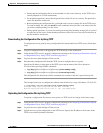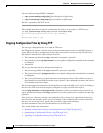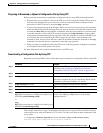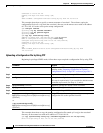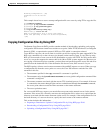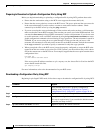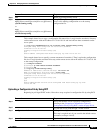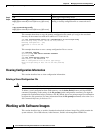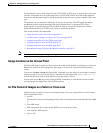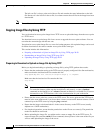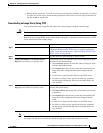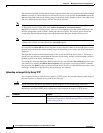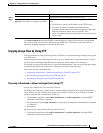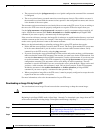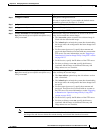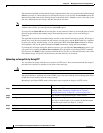
20-19
Cisco IOS Software Configuration Guide for Cisco Aironet Access Points
OL-11350-01
Chapter 20 Managing Firmware and Configurations
Working with Software Images
You download an access point image file from a TFTP, FTP, or RCP server to upgrade the access point
software. You upload an access point image file to a TFTP, FTP, or RCP server for backup purposes.
You can use this uploaded image for future downloads to the same access point or another of the same
type.
The protocol you use depends on which type of server you are using. The FTP and RCP transport
mechanisms provide faster performance and more reliable delivery of data than TFTP. These
improvements are possible because FTP and RCP are built on and use the Transmission Control
Protocol/Internet Protocol (TCP/IP) stack, which is connection-oriented.
This section includes this information:
• Image Location on the Access Point, page 20-19
• tar File Format of Images on a Server or Cisco.com, page 20-19
• Copying Image Files by Using TFTP, page 20-20
• Copying Image Files by Using FTP, page 20-23
• Copying Image Files by Using RCP, page 20-27
• Reloading the Image Using the Web Browser Interface, page 20-32
Note For a list of software images and supported upgrade paths, refer to the release notes for your access point.
Image Location on the Access Point
The Cisco IOS image is stored in a directory that shows the version number. A subdirectory contains the
HTML files needed for web management. The image is stored on the system board Flash memory
(flash:).
You can use the show version privileged EXEC command to see the software version that is currently
running on your access point. In the display, check the line that begins with
System image file is...
It shows the directory name in Flash memory where the image is stored.
You can also use the dir filesystem: privileged EXEC command to see the directory names of other
software images you might have stored in Flash memory.
tar File Format of Images on a Server or Cisco.com
Software images located on a server or downloaded from Cisco.com are provided in a tar file format,
which contains these files:
• info file
The info file is always at the beginning of the tar file and contains information about the files within
it.
• Cisco IOS image
• Web management files needed by the HTTP server on the access point
• radio firmware 5000.img file
• info.ver file



